Having glossy and healthy tresses is a dream of every lady. And women do everything they can to make their hair look gorgeous. However, you may sometimes notice that your strands have strange white particles on them that should not be present there at all. What is that? Well, that is lint in hair.
And quite often, people keep on asking the same question: why is there so much lint in my hair?
Today, we are going to find this out and give you answers as well! Read on, and you will learn why you have lint in your hair. In addition, we will explain how to get the lint out of your hair, and also, you will find out a few methods for preventing this whitish stuff from ending up on your tresses!
Why Do I Have Lint In My Hair?
If you have ever noticed white lint in your hair, you definitely wondered why it ended up there at all. There are several common reasons why lint can be found in your hair. It could be because of such factors as:
- Oil
- Dust
- Fabric particles that get stuck in your hair
But also, there are several other reasons you might not be aware of. Hair lint can also develop because of the factors that we will describe below.

Sebum
Yes, sebum can be one of the major factors that cause lint in your hair! In addition, sebum in our hair works as an adhesive, making lint hold to our scalp.
Although the job of sebum is to keep our hair moisturized between washes and protect our scalp and follicles, its tendency for catching lint is not something that one can be happy about.
This is why, when it is too much sebum, it begins to attract dirt, debris, and all sorts of dirt particles.
Of course, all of them settle on your tresses successfully. As a result, excess debris and dust end up forming lint in our hair and keep us uncomfortable until we do something about this issue.
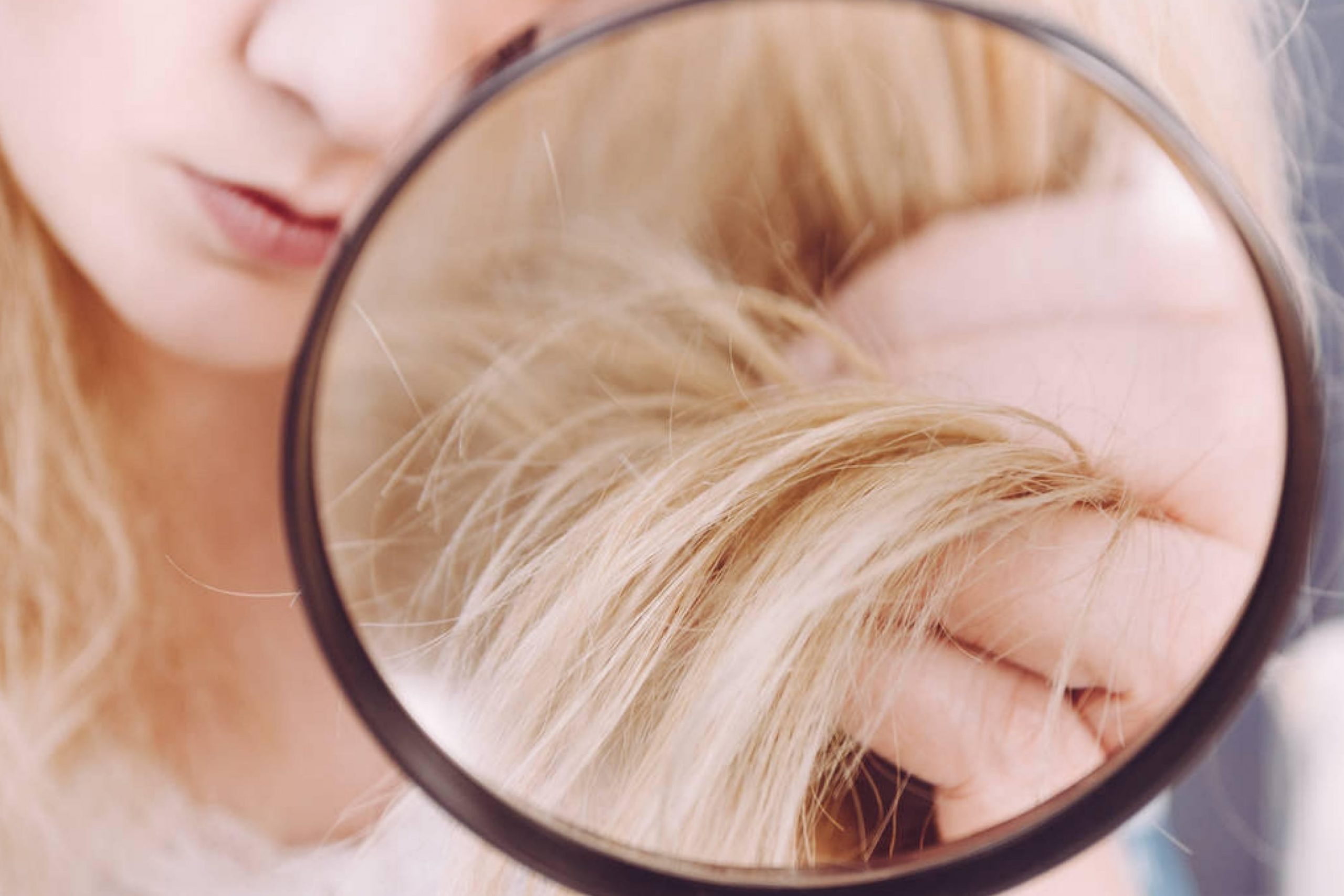
Debris And Dust
The settlement of tiny particles of debris, dust, oils, and fabric materials into your hair is one of the most common reasons you have lint in your hair.
How do those pieces end up on your tresses, you may ask? See, during the day, some of those things get into your hair from the environment.
Other particles can be left in your hair as you lie on the fabrics.
And since our hair has a static attraction as a quality, it can easily attract those particles and external materials from your surroundings. In terms of this, cloth debris is usually a major contributing factor to lint!
Split Or Broken Ends
Everyone knows that having split ends is not good. But not all of us know why. Split ends are often another primary cause of lint in your hair! As well as broken hair ends, by the way. See, lint can easily get attached to split ends. As a result, you will be left with fuzzy hair and sometimes an itchy scalp!
Also, if you have a habit of running your hand through your hair, you make your tresses more prone to breakage.
In addition, you also transfer particles of dust and other materials to your hair from your hands.
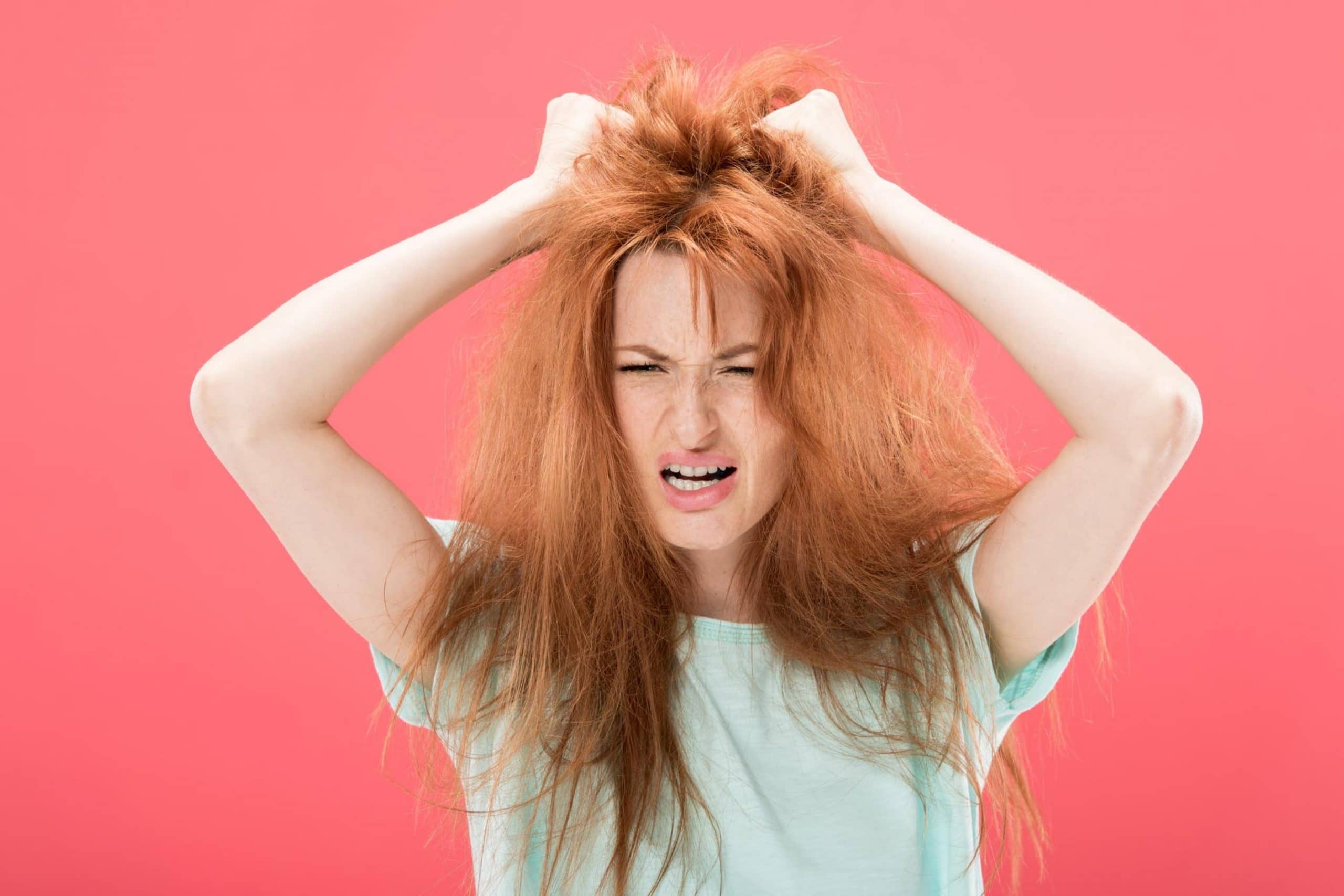
Your Hair Type
Your hair type can also make you susceptible to lint. For instance, if you have curly and/or wavy hair, be aware that it is more susceptible to lint. The reason is that this type of hair has an abundant amount of sebum and conditioner.
Dry hair is also prone to damage from friction because it doesn’t have enough moisture in it. And as a result, dry strands also become a magnet for lint. On the other hand, if you have too oily hair, walking around with oiled tresses will also expose your chevelure to lint, making your hair collect it easily.
As you can see, lint can end up on your hair not only because you stay in a dusty space for a long time or you live in an area with polluted air (but those could also be the reasons!). Below, you can find more information on how to cope with this issue and forget about lint in your hair forever.

How to Get Rid Of Lint In Hair?
Alright, you may say, now I know what makes lint settle on my strands. But how can I get it out of there?
Thankfully, there are quite many ways to get the lint out of your hair! And they are typically very easy. So in any case, you are not going to run out of options when ridding your hair of lint. Below, you can check out the four most effective solutions to try.
Wash the Lint Out
Simple as it is! Washing is one of the best ways you can take in order to get the lint out of your hair. Especially when you are trying to remove large amounts of lint quickly.
We recommend you use either castile soap or clarifying shampoo to wash your hair, and after washing, apply a conditioner. Also, after washing your hair, use a small tooth comb and remove any lint you find on the hair strands.
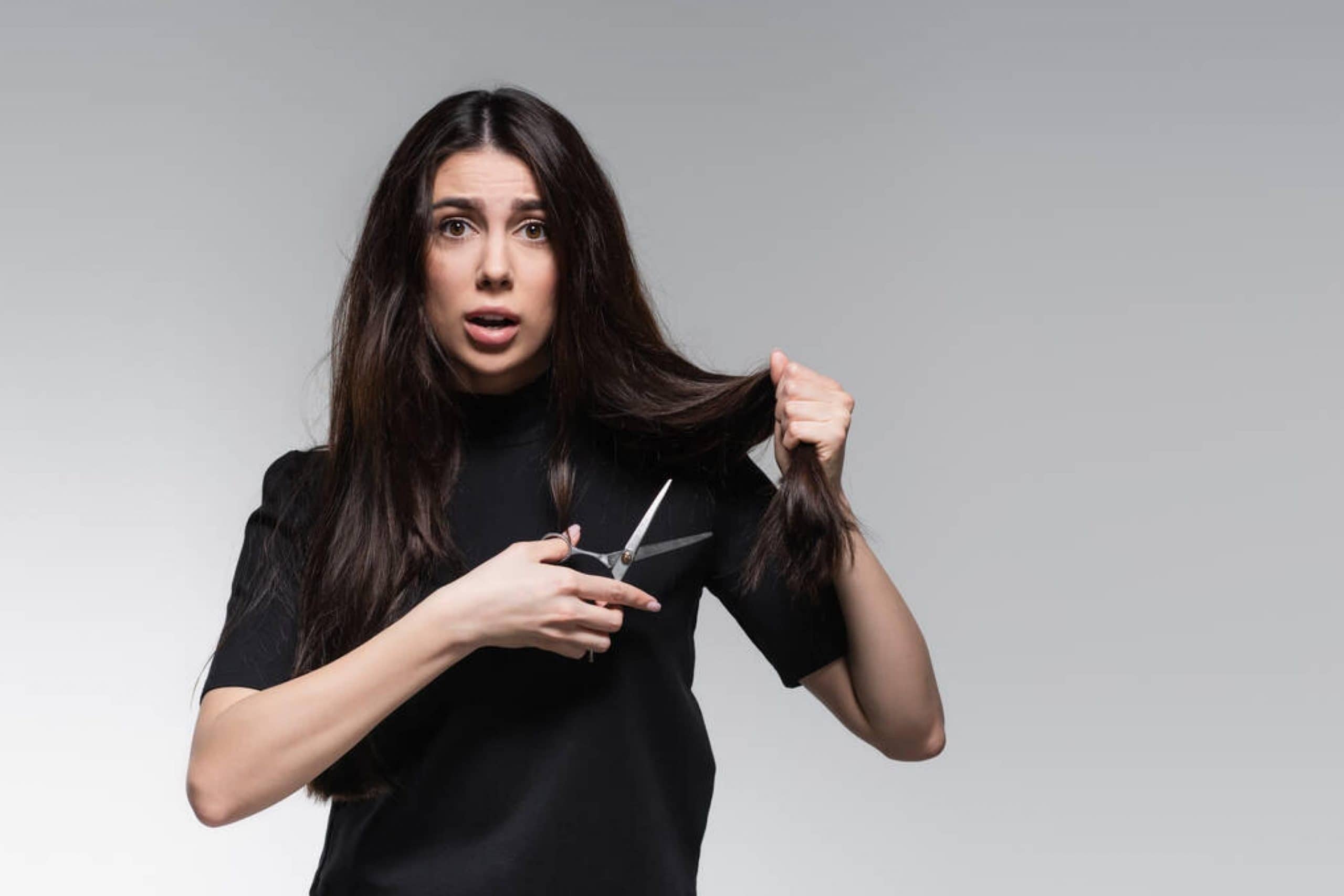
Comb The Lint Out
This is another effective and simple method. Combs can help you not only keep your strands properly untangled. They can also help you get out the lint from your hair, even before you consider washing it out.
For this purpose, you’d better use a wide-tooth comb. Like this, you will be able to take it out mechanically in a few easy steps.
- First, dampen your hair with a small amount of distilled water. It will serve as a sort of lubrication.
- Then, comb your hair thoroughly, ensuring that you cover every strand and every inch of your hair.
- Comb your hair from left to right, then from bottom to top, from top to bottom, and right to left. This is needed for preventing tangles from escaping the teeth of your comb.
Also, while undergoing this procedure, make sure you clean your comb often with a damp washcloth. And except for using a comb, you can also remove random pieces of lint from your hair with your fingers.
Pick them out carefully, one at a time, until you have them all out.
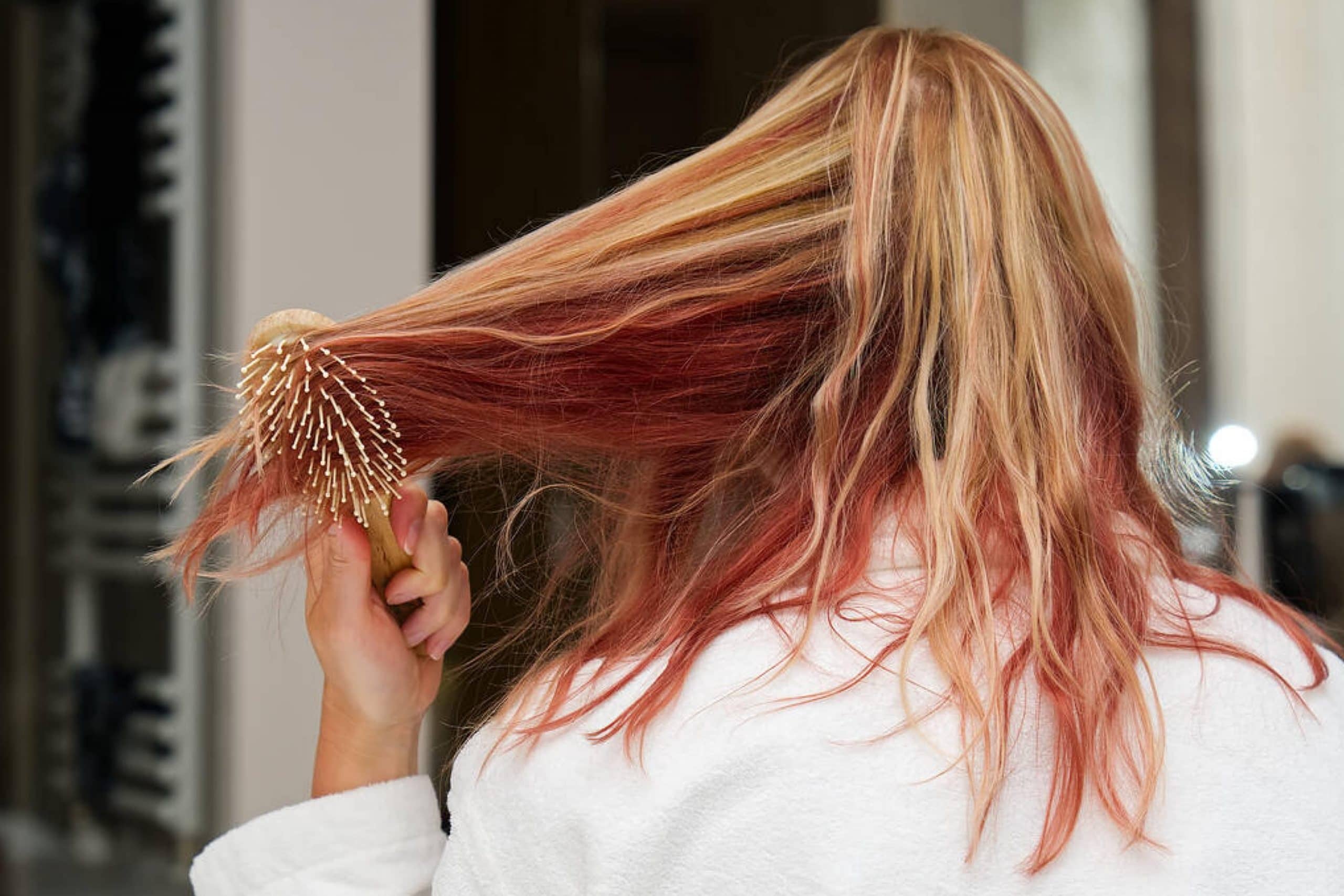
Try an Apple Cider Vinegar Rinse
Apple cider vinegar is a great natural remedy for our hair, and it’s super handy for getting all sorts of unsavory elements out of your tresses, including lint.
In addition, this product removes product buildup and serves as a natural cleanser for your hair.
So we recommend you prepare an apple cider vinegar rinse for your chevelure:
- After shampooing your hair, measure 1/2 cup of apple cider vinegar and add 2 cups of water.
- Pour this mixture into a big bowl
- Dip your hair into it, then squeeze once you notice the lint dissolving into the bucket.
- Do it again until the water is less gross and all the lint is removed.
- Then rinse your hair with water after you are done rinsing.
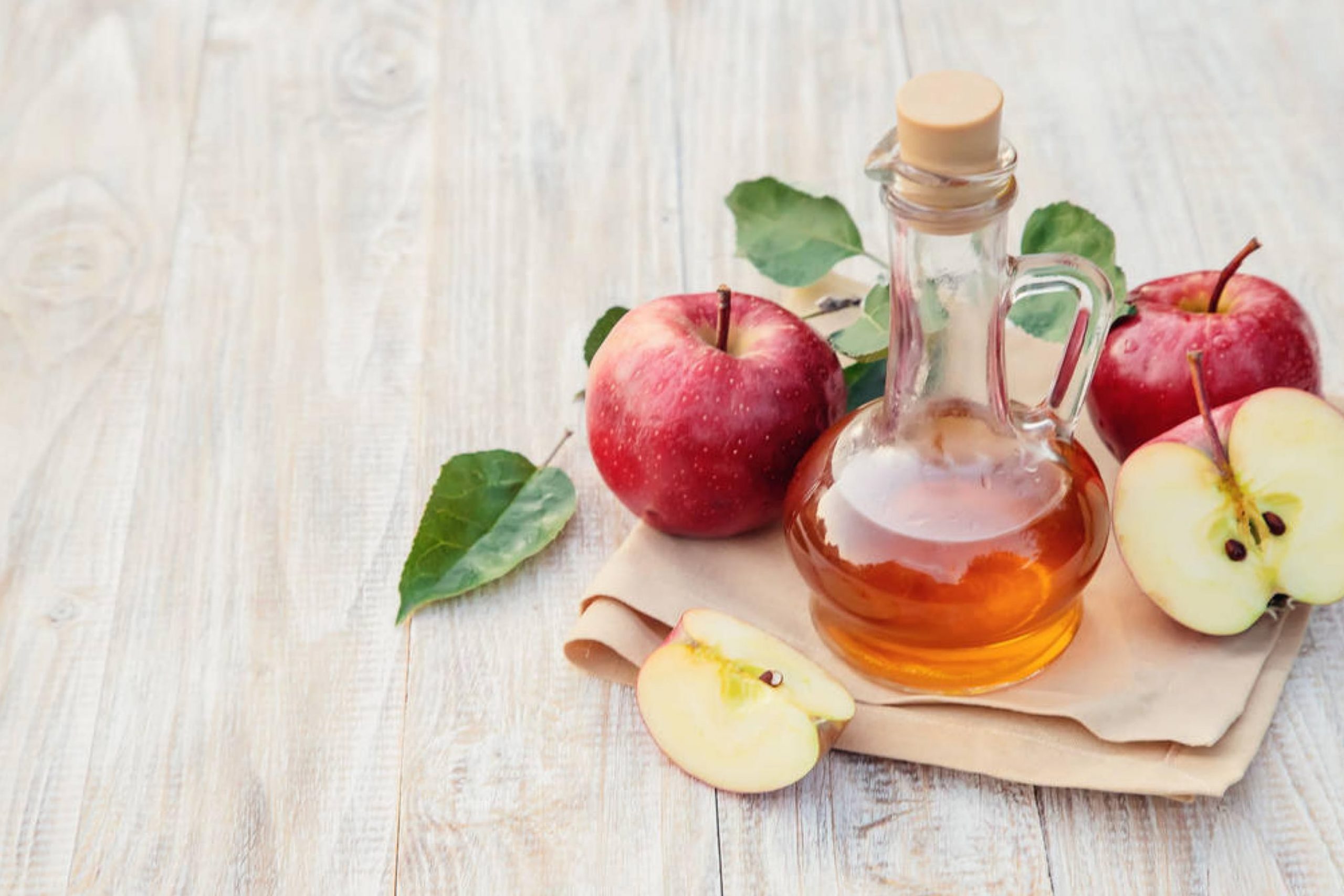
Use a Clarifying Hair Mask
Bentonite clay has healing abilities and absorbs the toxins it comes across. It works great to make your hair lint-free as it swallows up hair build-up easily.
Bentonite clay has antibacterial properties that not only remove toxic substances but remove build-up caused by hair products and even the most stubborn lint.
- Mix this clay with water with the help of a plastic spoon. See, bentonite clay carries a negative charge, so you shouldn’t use metal when mixing it.
- Apply the clay to your hair and let it sit for about 30 minutes under a hair wrap.
Well, now you know how to remove lint from your hair using safe and often natural ingredients and products. But preventing is always better than curing. This is why we suggest you read on and learn how lint can be prevented so that you don’t have it at all, and you make sure you never do.
How to Prevent Lint In Your Hair?
Getting rid of lint does not require any expensive hair products or procedures, however, it can be quite a bothersome procedure. And anyway, it takes time! This is why it is surely better to know how you can prevent lint from being trapped in your hair rather than making it disappear later.

Cover Your Hair
Of course, we don’t mean that you will have to go about with covered hair all the time! However, there are times when you must consider wearing things like scarves, bonnets, and hats to keep your hair safe.
For instance, when you go outdoors or when you are taking part in activities like exercising or sports, remember to keep your hair covered.
Some daily activities and chores like sweeping, car cleaning, and house cleaning can also expose your hair to dust and debris, which may eventually result in lint. So make sure you keep your hair covered before and while carrying out such chores.
At night, it is also recommended to cover your hair with a silk or satin bonnet. If it sounds too much for you and you don’t want to look like a Victorian lady, feel free to tie a scarf around your tresses.
This is necessary because your hair breaks at night when you toss and turn. By the way, using satin bed sheets and pillowcases may also help.
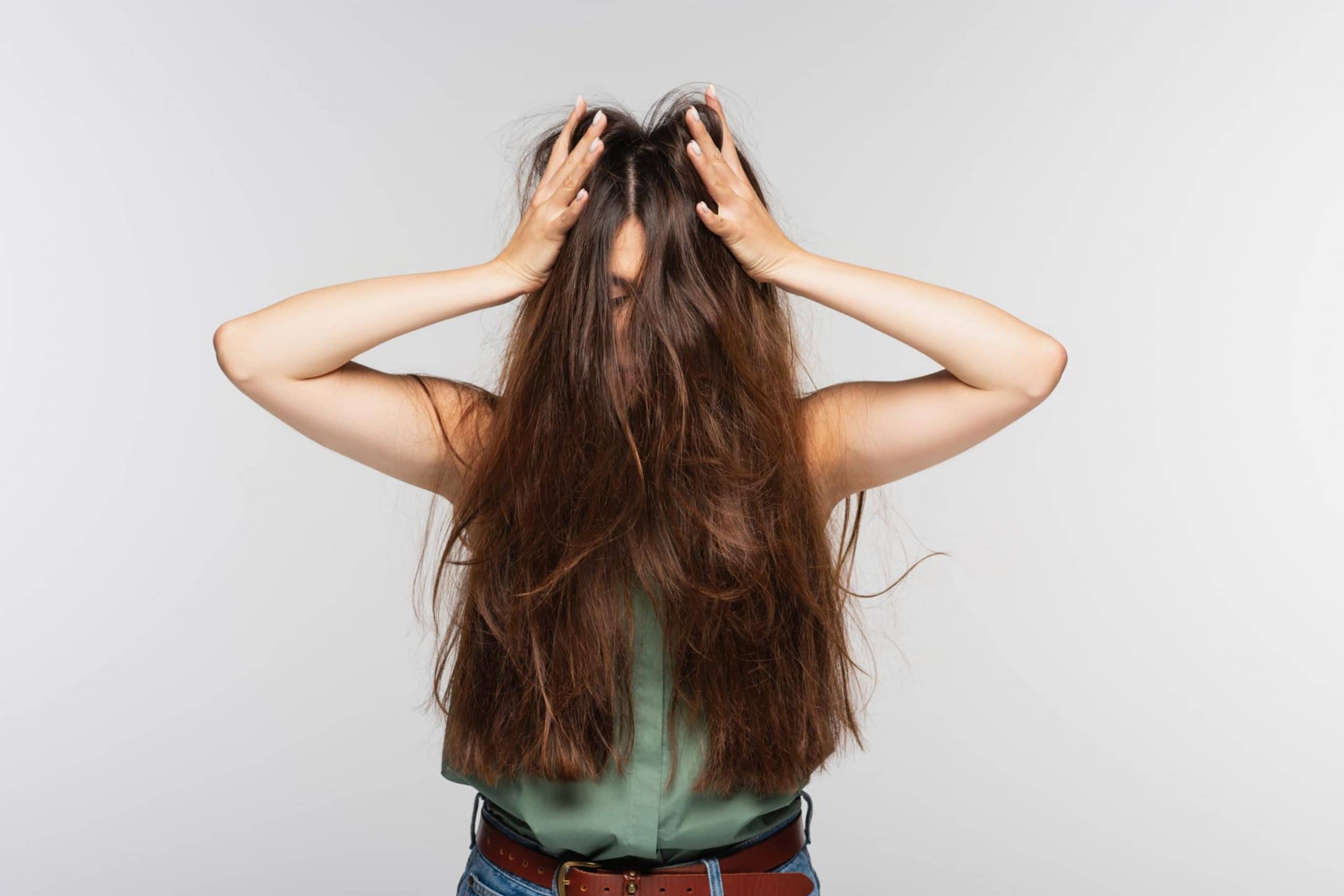
Use Oils Sparingly
Most of us tend to use different heavy oils like olive. However, these oils are known for actively attracting lint to our hair. This is why, it is better to either opt for lighter oils or use very little of it if you prefer the heavy oils.
Also, instead of applying oil on your entire head, apply it to your scalp only, and do it after a shower or hair wash. Like this, you will be able to avoid sticky hair that attracts lint.
Switch to lighter oils like sweet almond, coconut oil, and grapeseed oil for your hair, and lint shouldn’t be a bother anymore, at least not for you.

Clean Your Hair Tools
This is a rule of thumb, but let’s be honest, we often skip it. And this is when lint enters your hair from your uncleaned combs, brushes, and other tools. This is why make sure you clean them regularly.
With combs, pick out the lint from between the teeth and wash it. Yes, it’s boring and it takes time, but your hair will say thank you for that! You can also remove lint from brushes by using a tooth comb.
In general, combing and scrubbing your hair tools often enough with the use of soapy water can help to prevent lint presence and take it away if it is already there.

Reduce Hair Products
As we stated earlier in this post, hair product buildup could lead to the presence of lint in your hair. Stick to a minimum number of products you need to maintain your hair and stay away from other products, unless on special occasions.
Even beyond lint, product buildup is bad for your hair and should be avoided. The excessive buildup is like a magnet to lint, dirt, and other toxic substances that have no business being in your hair.
Like this, you are now aware of the most common factors that are responsible for lint ending up in your hair.
Now you know what should be avoided if you want your hair to be lint-free, and also, we shared a few handy tips about how lint can be removed easily and relatively quickly from both your hair and hair tools.
In addition, with the information about lint prevention, you will be able to get rid of this nasty stuff.
[wp-faq-schema title=”Frequently Asked Questions”]
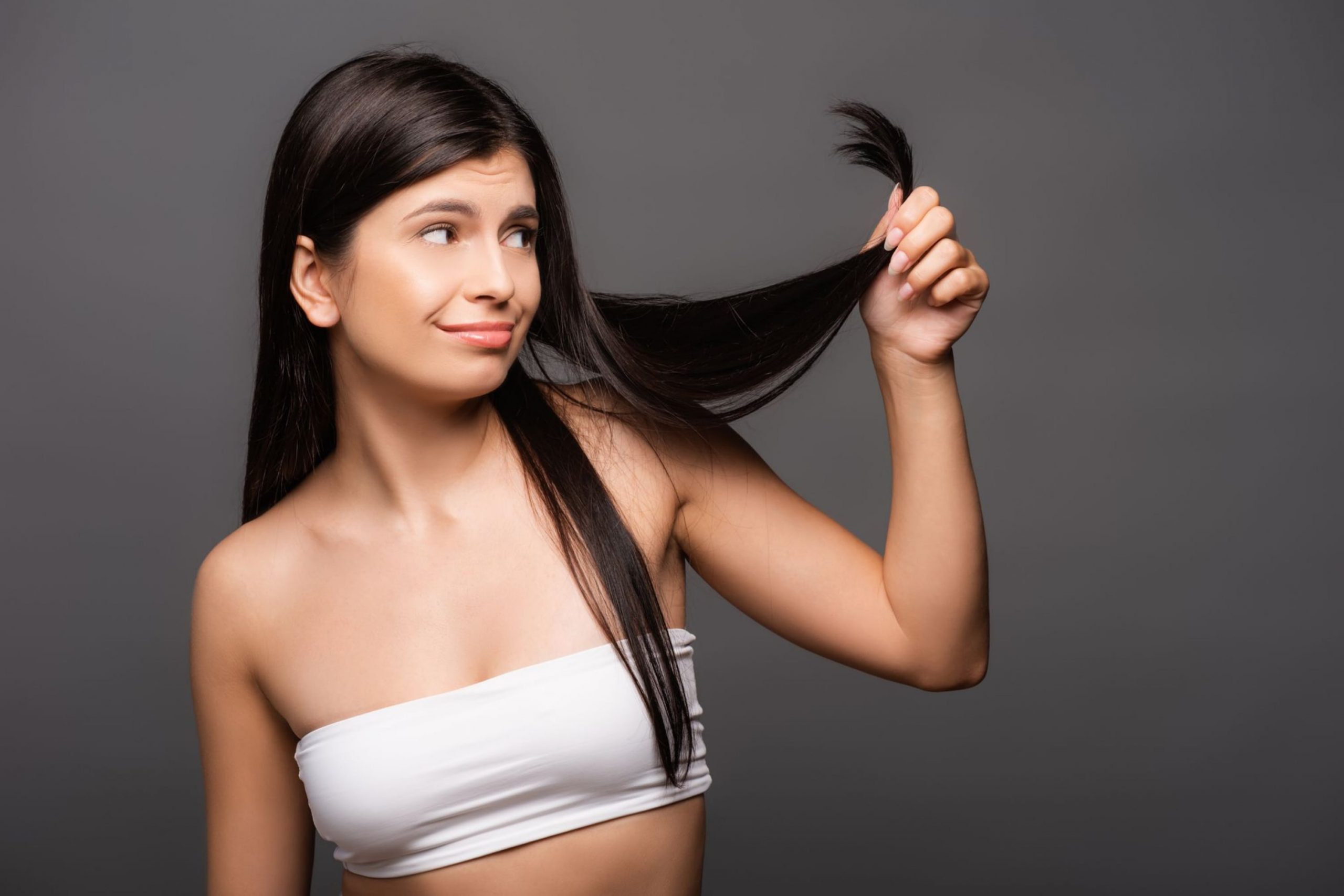
I noticed that, after we moved, my hair combs tend to become covered with lint so much faster! What could be the reason?
I guess the problem is the air in an area where you live now. Perhaps, the level of pollution is higher there than it was before. Anyway, try to cover your hair when you’re outdoors, and wash your combs more frequently.
Does anyone know whether lint can cause hair loss? And if it can, then what can be done to fix this? Thanks a lotin advance!
Hi! To be honest, I have never heard of lint causing hair loss…I do know it can cause itch scalp. As for the hair loss, I think you can ask your doctor.
I think it does. A strand falls out and lint covers the hair follicle. Then the new hair can’t grow threw it. I once had bald spots from it.
Hello! I’m here with quite a weird question maybe, but why is there lint in my hairbrush? Does anyone have the same problem or it’s just me?
I have it all the time! And it’s so annoying to remove it! I guess lint forms between the brush bristles because of product buildup we carry on our hair (e.g. from shampoos, conditioners, hair oils, etc.). Also dust from the air can settle on our hair and be transferred to the brush when we comb our locks. Sometimes I think I’ll be just buying a new brush each time the old one gets linty.
I know I’m not the first person to ask this, but how to get rid of lint in hair? It looks very untidy on hair as if I have ashes in my hair!
Hi! Yeah, I know that problem…I use clarifying shampoo, it really works well! I guess it’s because it removes the product buildup that forms on our hair, thus making the strands less “sticky” to catch lint.
Hey there! Listen folks, does anyone know what’s that white fluff in hair? It’s not dandruff for sure, I checked my scalp and all the analysis were fine. But I keep finding this stuff in my hair. Why?
Hey dude! That stuff is called lint. It creates when tiny particles of dust from the air gets stuck to your hair due to the presence of buildup on it. You can reduce its amount by washing your hair with a clarifying shampoo.
Does lint in hair lead to tangles? Sometimes I wake up just to see tiny knots on my strands that have this white stuff stuck in them!
In fact, it does lead to tangles. Lint from clothing can settle in the hair, causing tangles. This is why if you have long hair, you should properly care for it, which usually requires having an effective means of removing lint. Try clarifying shampoo and hair sprays that prevent lint from settling on your mane.
This article made a lot of sense to me. I have struggled with this stuff for years often chopping my hair to get rid of it which never worked. I am working on looking better not only because I have moved up in life but also because my new job will take me to higher better places than I am right now. Thank you